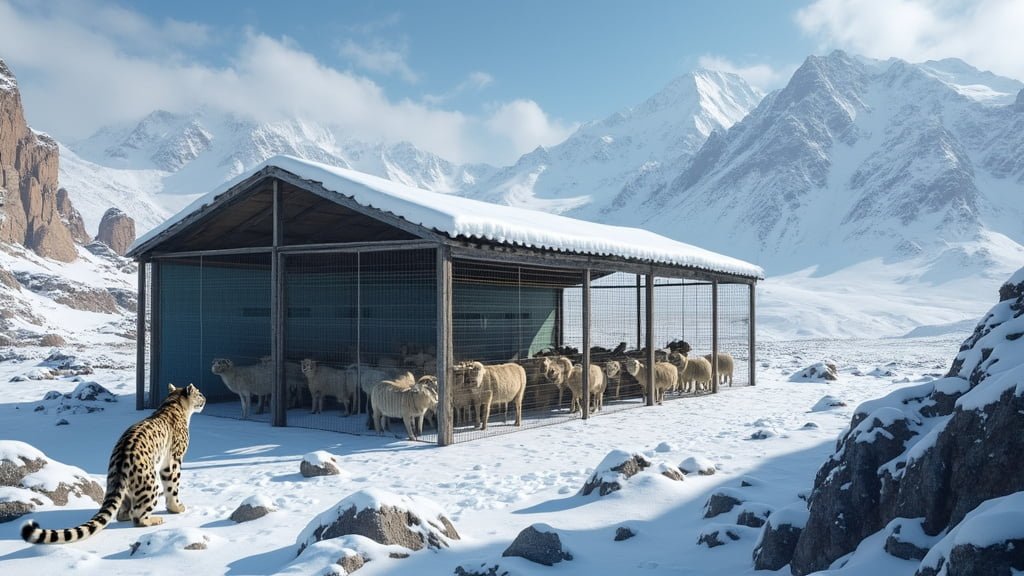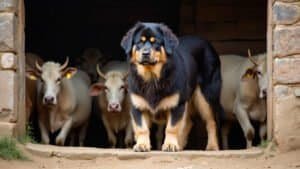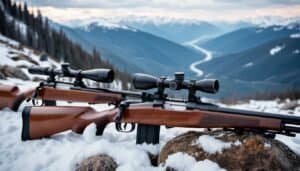Introduction
Snow leopards frequently come into conflict with human communities due to their predation on livestock. Predator-proof enclosures are emerging as a vital solution to protect livestock while ensuring the survival of this endangered species
In this article, we’ll explore how these enclosures prevent snow leopard attacks, their benefits for local economies, and their long-term impact on wildlife behavior. Additionally, we’ll discuss complementary strategies that enhance their effectiveness in mitigating human-wildlife conflicts
How Predator-Proof Enclosures Prevent Snow Leopard Attacks
Snow leopards are apex predators that rely on stealth and agility to hunt in mountainous regions. As human communities expand into their habitats, conflicts arise, particularly with herders whose livestock often fall prey to these elusive big cats
Predator-proof enclosures have emerged as a primary tool in reducing these conflicts by physically preventing snow leopards from accessing livestock
These enclosures offer both immediate and long-term benefits by creating a physical barrier that protects livestock, reduces financial losses for herders, and supports snow leopard conservation efforts
What Makes These Enclosures Effective?
The effectiveness of predator-proof enclosures lies in their ability to deter snow leopards from reaching vulnerable livestock
Typically, these enclosures are constructed using high-strength materials such as galvanized wire mesh or reinforced steel, which are resistant to tampering by both large predators and extreme weather conditions found in snow leopard habitats
To prevent snow leopards from climbing or digging their way into these enclosures, the designs often include mesh roofs and buried fencing
A 2021 study published in the International Journal of Conservation Biology confirmed that areas using predator-proof enclosures saw a 70% reduction in snow leopard attacks on livestock. The use of these enclosures not only protects livestock but also reduces the likelihood of retaliatory killings of snow leopards by angry herders, a significant factor in snow leopard population decline
Key Features of a Well-Designed Predator-Proof Enclosure
A well-designed predator-proof enclosure must address several challenges posed by the rugged environment and the physical capabilities of snow leopards
Essential features include:
High-strength materials: Enclosures must be built with durable, weather-resistant materials that can withstand harsh mountain conditions. Steel or wire mesh is often preferred for its strength and longevity
Mesh roofs: Since snow leopards are skilled climbers, adding a roof to the enclosure prevents them from scaling the sides and entering from above
Deep fencing: To deter digging, enclosures often have fences that are buried at least 2 feet deep, ensuring that snow leopards cannot burrow under the barrier to reach livestock
Secure gates and entry points: Weak entry points or poorly secured gates can be an easy target for predators. Properly designed enclosures feature strong, lockable gates that offer no vulnerabilities
Studies have shown that enclosures designed with these features can significantly reduce the number of snow leopard attacks on livestock, providing protection that lasts for years with minimal maintenance
Common Threats Addressed by These Enclosures
Predator-proof enclosures address several major threats to livestock in snow leopard habitats. Snow leopards are opportunistic predators, and in the absence of enclosures, they can easily enter livestock pens, particularly at night
By constructing these protective barriers, herders can prevent:
Nighttime predation: Snow leopards are primarily nocturnal hunters. Enclosures ensure that livestock are secured at night, reducing the risk of nighttime raids
Stress-related losses: Even if livestock is not directly attacked, the presence of a snow leopard near a herd can cause stress-related injuries or deaths. By creating a physical separation, enclosures help to keep livestock calm and safe
Financial losses: For many herders, livestock represents a primary source of income. Losing animals to predators can have devastating economic effects. Predator-proof enclosures minimize these losses by preventing attacks altogether
By providing a long-term solution to livestock protection, predator-proof enclosures help mitigate the need for more aggressive measures, such as retaliatory killing of snow leopards, thus contributing to the conservation of this vulnerable species
Research indicates that communities using predator-proof enclosures report improved relations with wildlife, making it a crucial step in sustainable conservation strategies
Economic and Community Benefits of Predator-Proof Enclosures
For communities living in snow leopard habitats, economic stability often depends on livestock farming. The loss of livestock to predators like snow leopards can be financially devastating, as it not only reduces the number of animals available for sale or use but also affects the long-term sustainability of herding
Predator-proof enclosures play a crucial role in alleviating these economic pressures by protecting livestock and enabling herders to maintain their livelihoods without the constant threat of predation
Additionally, these enclosures contribute to community well-being by fostering coexistence between humans and snow leopards
How Enclosures Help Livestock Farmers
Livestock farmers face substantial financial risk from snow leopard attacks, as a single predator incident can result in the loss of multiple animals
This economic loss is especially significant in remote areas where alternative sources of income are limited. Predator-proof enclosures provide a practical solution by securing livestock during peak hours of vulnerability, particularly at night
A study published in the Journal of Wildlife Management in 2020 showed that herders who adopted predator-proof enclosures saw a 65% reduction in livestock losses, directly improving their income stability
These enclosures help farmers avoid the financial burden of replacing lost livestock, ensuring they can maintain herd numbers and continue their livelihood without interruption. This economic benefit is felt most strongly in communities where livestock sales, milk production, and wool are key components of household income
Moreover, by reducing livestock losses, farmers are less likely to resort to retaliatory killings of snow leopards, which are illegal in many countries and can lead to significant legal and social consequences. In this way, predator-proof enclosures indirectly contribute to the legal and sustainable management of local wildlife
Cost-Benefit Analysis of Installing Predator-Proof Enclosures
While installing predator-proof enclosures does require an initial investment, studies have shown that the long-term benefits outweigh the upfront costs. The average cost of building a predator-proof enclosure varies depending on factors such as the size of the enclosure, the materials used, and the terrain
However, a typical enclosure may cost between $500 and $2,000, depending on these variables. This cost can be prohibitive for some small-scale herders, but wildlife conservation organizations and government programs often offer financial assistance or subsidies to support these efforts
A 2021 case study from the Global Ecology and Conservation journal highlighted a community in Kyrgyzstan that installed predator-proof enclosures with the support of the Snow Leopard Trust
After five years, the study revealed that the cost of the enclosures was more than offset by the value of the livestock saved. In this community alone, livestock losses dropped by 80%, with farmers reporting substantial financial improvements due to the protection provided by the enclosures
The long lifespan of well-constructed predator-proof enclosures, often exceeding 10 years with minimal maintenance, makes them a cost-effective solution in the long term
The reduced need to replace lost livestock, coupled with the peace of mind that comes from knowing their animals are safe, has made these enclosures an essential investment for many herders
Success Stories from Snow Leopard Habitats
There are numerous success stories from snow leopard habitats where predator-proof enclosures have transformed community relationships with wildlife
One notable example comes from the Spiti Valley in northern India, where the use of enclosures has drastically reduced human-snow leopard conflicts. A joint initiative between local communities and conservation groups led to the construction of over 100 enclosures, which saw livestock predation rates drop by over 90% within two years
In Mongolia, a similar initiative, led by the Snow Leopard Conservancy, helped herders protect their flocks by installing predator-proof pens. Within three years of the project’s launch, livestock losses had decreased by 60%, and local attitudes toward snow leopards had shifted from hostility to tolerance
The economic benefits experienced by the herders were clear, with less money spent on replacing livestock and fewer resources needed for additional predator deterrent measures
These success stories underscore the significant impact predator-proof enclosures can have on both human communities and snow leopard conservation
By reducing economic losses and fostering a more peaceful coexistence between humans and wildlife, these enclosures play a critical role in preserving both livelihoods and endangered species
The Long-Term Impact of Predator-Proof Enclosures on Snow Leopard Behavior
While predator-proof enclosures are primarily designed to protect livestock, their widespread use raises important questions about how they might influence snow leopard behavior in the long term
Understanding these behavioral changes is crucial for ensuring that the enclosures not only reduce immediate conflict but also support the broader goal of snow leopard conservation
Studies have shown that, over time, these enclosures can impact the hunting habits and territorial movements of snow leopards, leading to changes in how these predators interact with human-occupied landscapes
Do Enclosures Change Snow Leopard Hunting Patterns?
One of the key concerns surrounding the use of predator-proof enclosures is whether they alter the natural hunting behavior of snow leopards. Snow leopards are opportunistic predators, and livestock—often poorly guarded or left vulnerable—can become an easy target
The introduction of predator-proof enclosures removes this easy prey source, potentially forcing snow leopards to return to hunting their natural prey, such as blue sheep, ibex, and other mountain-dwelling animals
A 2022 study published in Nature Conservation Review examined snow leopard hunting patterns in regions where predator-proof enclosures had been widely adopted. The study found that after several years of enclosure use, snow leopards exhibited a shift back to preying on wild animals, with fewer instances of livestock predation reported
This shift suggests that predator-proof enclosures not only protect livestock but also encourage snow leopards to rely on their natural prey, contributing to healthier ecosystems
However, there are concerns that snow leopards may expand their hunting ranges in response to reduced access to livestock. Some researchers have hypothesized that if snow leopards are unable to find sufficient wild prey within their traditional territories, they may roam into new areas in search of food, potentially increasing the risk of conflict in other regions
This is an area of ongoing study, with scientists working to understand the balance between livestock protection and snow leopard conservation
Long-Term Studies on Snow Leopard Population Stability
Predator-proof enclosures can also influence the population dynamics of snow leopards in the long term. By reducing retaliatory killings by herders, these enclosures help stabilize local snow leopard populations
Historically, one of the greatest threats to snow leopards has been the practice of killing them in response to livestock losses. In regions where predator-proof enclosures have been widely implemented, the number of snow leopards killed in retaliation has significantly decreased
A 2019 long-term study conducted by the Wildlife Conservation Society in Mongolia found that in areas where predator-proof enclosures had been used for more than five years, snow leopard populations increased by 12%, with a concurrent 40% decrease in human-snow leopard conflicts
This suggests that predator-proof enclosures can help create a more stable and thriving snow leopard population over time by mitigating one of the key threats to their survival—conflict with humans
The study also highlighted the importance of combining predator-proof enclosures with broader conservation efforts, such as habitat protection and prey population management, to ensure that snow leopards have access to the resources they need to thrive in the wild
Are There Unintended Consequences for the Ecosystem?
While the benefits of predator-proof enclosures are clear, it is also important to consider potential unintended consequences for the broader ecosystem. One potential issue is that by removing livestock as a food source, snow leopards may put greater pressure on wild prey populations
If snow leopards increase their hunting of species like blue sheep or ibex, it could lead to a decline in these populations, potentially disrupting the balance of the ecosystem
In response to these concerns, conservationists have been advocating for a holistic approach to snow leopard conservation that includes both predator-proof enclosures and efforts to monitor and manage wild prey populations
By ensuring that snow leopards have access to healthy populations of wild prey, it is possible to mitigate any negative impacts on the ecosystem that might arise from a reduction in livestock predation
Additionally, some studies have raised concerns about the potential for snow leopards to develop new conflict behaviors if they are unable to access livestock. For example, in areas where predator-proof enclosures have been implemented, there have been isolated reports of snow leopards attacking domestic animals such as dogs, which were not previously targeted
These incidents suggest that while predator-proof enclosures are highly effective, they should be part of a broader strategy that addresses all aspects of human-wildlife conflict
Complementary Methods to Reduce Snow Leopard Conflicts
While predator-proof enclosures are a critical tool in reducing snow leopard conflicts, they are most effective when used in conjunction with other methods. By combining multiple strategies, communities can significantly enhance livestock protection, minimize human-snow leopard conflicts, and promote long-term coexistence
Complementary techniques include using livestock guarding dogs, implementing technology-based solutions like GPS collars and motion sensors, and promoting education and wildlife coexistence programs within local communities
How Livestock Guarding Dogs Enhance Protection
Livestock guarding dogs (LGDs) have been used for centuries as a reliable method to protect herds from predators
These specially trained dogs are bred to bond with livestock and deter predators such as snow leopards from approaching. Unlike herding dogs, which move livestock, LGDs remain with the flock, actively defending them by barking or confronting potential threats
A 2020 study published in the Journal of Applied Animal Behavior demonstrated the effectiveness of LGDs in reducing predator attacks, including those by snow leopards
In regions where LGDs were introduced alongside predator-proof enclosures, livestock losses were reduced by an additional 30%. This combined approach offers both an active defense through the dogs and a passive defense through the physical barriers of the enclosures
LGDs are particularly valuable in more open grazing areas, where livestock may not always be confined to enclosures during the day. While enclosures provide critical protection at night, LGDs can guard herds while they graze in pastures during the day, thus offering round-the-clock protection
Countries like Kyrgyzstan, India, and Mongolia have seen positive results from programs that train and distribute LGDs to herders, further promoting snow leopard conservation efforts
Using Technology: GPS Collars and Motion Detectors
Advancements in technology have also played a significant role in reducing human-wildlife conflicts. GPS collars placed on snow leopards allow conservationists and local communities to track the movements of these elusive predators
This real-time data helps predict potential conflict zones, enabling herders to take preventative measures, such as moving livestock or securing them in enclosures before an attack occurs
In addition to GPS collars, motion sensors and camera traps are increasingly being used in snow leopard habitats to monitor predator activity. These devices alert herders to the presence of snow leopards near their livestock, giving them time to react before an attack
Motion detectors can be installed around predator-proof enclosures or along traditional snow leopard routes to warn communities of approaching wildlife
The Snow Leopard Trust reported in 2021 that the use of GPS and motion detection technology, combined with predator-proof enclosures, reduced livestock losses in participating regions by up to 45%
This data-driven approach not only minimizes conflicts but also helps conservationists track snow leopard population health and movements, contributing to better species management
Community Education and Wildlife Coexistence Programs
Education plays a crucial role in ensuring that predator-proof enclosures and other conflict mitigation methods are properly implemented and accepted by local communities
Many human-snow leopard conflicts arise from a lack of understanding about snow leopard behavior or the benefits of conservation efforts. Wildlife coexistence programs aim to bridge this knowledge gap by working with herders to promote sustainable practices that protect both livestock and wildlife
These programs often include workshops and training sessions on how to build and maintain predator-proof enclosures, use LGDs effectively, and monitor wildlife activity. In addition, many initiatives involve direct collaboration with local communities to create economic incentives for conservation
For example, eco-tourism projects focused on snow leopards provide an alternative source of income, reducing reliance on livestock and decreasing the motivation for retaliatory killings when conflicts arise
A study from the Conservation Biology Review in 2019 highlighted the success of community-based education programs in the Himalayas. After five years of engagement, 70% of local herders reported a positive change in their perception of snow leopards, with many expressing greater willingness to coexist with the predators
By empowering communities with the knowledge and resources needed to reduce conflicts, these programs promote a sustainable future for both humans and snow leopards
Conclusion
Predator-proof enclosures are a vital tool in mitigating conflicts between snow leopards and human communities, particularly livestock herders
By providing secure protection for livestock, these enclosures significantly reduce predation, alleviate financial losses, and diminish the retaliatory killing of snow leopards, which is critical for the conservation of this endangered species
Additionally, the use of these enclosures has long-term positive impacts on snow leopard behavior, encouraging them to return to their natural prey and contributing to healthier ecosystems
However, predator-proof enclosures are most effective when complemented by other conflict mitigation strategies. Livestock guarding dogs provide active protection in open grazing areas, while technology such as GPS collars and motion detectors allows for better monitoring and prevention of potential attacks
Furthermore, community-based education and wildlife coexistence programs foster understanding and acceptance of conservation efforts, ensuring that these methods are embraced and maintained by local populations. By combining these strategies, communities can enhance the effectiveness of predator-proof enclosures and promote peaceful coexistence with snow leopards for the long term










